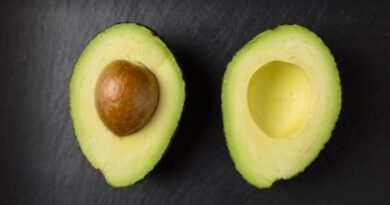Exploring Ancient Grains for Better Health
Ancient grains have been gaining popularity in recent years as people seek out healthier and more nutritious alternatives to modern grains. From quinoa to teff, these ancient grains offer a myriad of health benefits and can be a valuable addition to any diet. In this article, we will delve into the world of ancient grains, exploring their history, nutritional value, and how they can contribute to better health.
The Rise of Ancient Grains

Ancient grains, also known as heritage grains, are grains that have been largely unchanged over the centuries. Unlike modern grains like wheat and corn, ancient grains have remained true to their original form, making them a source of nutrition that our ancestors would have recognized. Examples of ancient grains include quinoa, amaranth, farro, spelt, and teff.
These grains have been a staple in the diets of various civilizations throughout history, providing essential nutrients and sustenance. However, with the rise of industrial agriculture and the mass production of modern grains, ancient grains were largely forgotten. It is only in recent years that they have made a resurgence, as people rediscover the health benefits of these age-old ingredients.
The Nutritional Benefits of Ancient Grains

Ancient grains are known for their impressive nutritional profiles, often containing higher levels of protein, fiber, vitamins, and minerals compared to modern grains. For example, quinoa is a complete protein, meaning it contains all nine essential amino acids that the body cannot produce on its own. This makes it an excellent plant-based protein source for vegetarians and vegans.
Similarly, amaranth is rich in iron, calcium, magnesium, and phosphorus, making it a powerhouse of nutrients. Farro is high in fiber and antioxidants, which can help support digestive health and reduce inflammation in the body. Teff, a tiny grain native to Ethiopia, is packed with iron, calcium, and resistant starch, making it a great choice for boosting energy levels and supporting bone health.
By incorporating ancient grains into your diet, you can benefit from a wide range of nutrients that are essential for overall health and well-being. These grains are also often less processed than modern grains, preserving their natural goodness and making them a healthier choice for those looking to improve their diet.
Ancient Grains in Modern Cooking

Ancient grains can be used in a variety of ways in modern cooking, from salads and soups to baked goods and breakfast bowls. Their versatility and unique flavors make them a popular choice for home cooks and professional chefs alike. Quinoa, for example, can be used as a base for grain bowls, added to salads for extra protein, or even incorporated into baked goods like cookies and muffins.
Farro is often used in risottos, soups, and salads for its nutty flavor and chewy texture. Amaranth can be popped like popcorn and used as a topping for yogurt or cereal, or cooked into a creamy porridge for a nutritious breakfast. Teff flour is commonly used in gluten-free baking to make bread, pancakes, and other baked goods.
Exploring ancient grains in the kitchen can open up a world of culinary possibilities, allowing you to experiment with new flavors and textures while reaping the nutritional benefits of these ancient ingredients.
The Sustainability of Ancient Grains

In addition to their health benefits, ancient grains are also more sustainable than modern grains. Many ancient grains are hardy crops that can thrive in diverse climates and soil conditions, making them more resilient to environmental challenges like drought and pests. They also require fewer inputs like pesticides and fertilizers, reducing their impact on the environment.
Furthermore, ancient grains often have deeper root systems than modern grains, which can help improve soil health and prevent erosion. By growing ancient grains, farmers can promote biodiversity and support local ecosystems, creating a more sustainable and resilient food system.
Ancient Grains and Food Security
As the world faces the challenges of climate change and a growing population, ancient grains can play a crucial role in ensuring food security for future generations. These resilient crops have the potential to provide nutritious and sustainable food sources for communities around the world, particularly in regions where modern agriculture is not viable.
By reintroducing ancient grains into agricultural practices, we can diversify our food supply, reduce our reliance on a few staple crops, and build a more resilient food system that can adapt to changing environmental conditions. This can help address issues like malnutrition, food scarcity, and the loss of agricultural biodiversity, creating a more sustainable and secure food future for all.
Ancient Grains in the Market
With the increasing popularity of ancient grains, many food companies and retailers are now offering a wide range of products made with these nutritious ingredients. From ancient grain bread and pasta to breakfast cereals and snack bars, there are plenty of options available for consumers looking to incorporate more ancient grains into their diet.
However, it is important to be mindful of the quality and sourcing of these products, as not all ancient grain products are created equal. Look for products that are made with whole ancient grains, without added sugars, preservatives, or artificial ingredients. Opt for organic and non-GMO products whenever possible to ensure the highest quality and nutritional value.
Ancient Grains and Gut Health
Ancient grains can also play a beneficial role in gut health, thanks to their high fiber content and prebiotic properties. Fiber is essential for promoting healthy digestion and maintaining a diverse gut microbiome, which is crucial for overall health and well-being. Prebiotics, found in certain types of fiber, can help nourish beneficial gut bacteria and support a healthy gut environment.
By incorporating ancient grains like quinoa, amaranth, and farro into your diet, you can provide your gut with the fiber and prebiotics it needs to thrive. These grains can help regulate digestion, prevent constipation, and reduce the risk of digestive disorders like irritable bowel syndrome (IBS) and inflammatory bowel disease (IBD).
Common Misconceptions About Ancient Grains
Despite their nutritional benefits, ancient grains are sometimes misunderstood or overlooked in favor of modern grains. One common misconception is that ancient grains are difficult to cook or incorporate into recipes, but with a little practice and experimentation, they can be just as versatile as modern grains.
Another misconception is that ancient grains are inferior in taste or texture compared to modern grains, but many people find them to be more flavorful and satisfying. Ancient grains can add a unique and delicious element to dishes, enhancing both the taste and nutritional value of your meals.
FAQs About Ancient Grains
1. Are ancient grains gluten-free?
While some ancient grains like quinoa and amaranth are naturally gluten-free, others like farro and spelt contain gluten. If you have a gluten intolerance or celiac disease, it is important to choose certified gluten-free ancient grains to avoid any adverse reactions.
2. How should I store ancient grains?
Ancient grains should be stored in a cool, dry place away from direct sunlight and moisture. You can also store them in airtight containers or sealed bags to prevent them from absorbing odors or becoming stale.
3. Can I eat ancient grains if I have diabetes?
Ancient grains can be a healthy choice for people with diabetes, as they are low on the glycemic index and can help regulate blood sugar levels. However, it is important to monitor your carbohydrate intake and portion sizes to manage your blood sugar effectively.
Conclusion
In conclusion, exploring ancient grains for better health can lead to a myriad of benefits, from improved nutrition and sustainability to enhanced gut health and food security. By incorporating ancient grains like quinoa, amaranth, farro, and teff into your diet, you can experience the unique flavors and nutritional value of these age-old ingredients.
Ancient grains offer a delicious and nutritious alternative to modern grains, providing essential nutrients and health benefits that can support your overall well-being. Whether you’re looking to expand your culinary horizons or improve your diet, ancient grains are a valuable addition to any kitchen and can help you on your journey to better health.
To wrap things up, consider incorporating ancient grains into your next meal and experience the difference they can make in your health and wellness journey. Embrace the wisdom of the past and nourish your body with the goodness of ancient grains for a healthier and more sustainable future.




